Research Article :
Gloria Phebeni, Nomsa
Nxumalo-Magagula, Ruth N Mkhonta and Tengetile R
Mathunjwa-Dlamini Background: In women cervical cancer is the leading cause of
death among all cancers in developing countries, but it can be controlled
through prevention and early detection of precursor lesions. In 2013 there were
223 new cases of cervical cancer in Swaziland with an estimated 118 cervical
cancer related deaths. Most clients suffering from cervical cancer were below
the age of 40 years and were diagnosed in the late stage. The study determined
knowledge, attitudes and practices of women in relation to cervical cancer
screening and treatment at one of the health facilities in the Hhohho Region,
in Swaziland. Methodology: A quantitative-descriptive approach was utilized
among 56 participants selected using purposive sampling. Respondents were women
who came for health care services at the Health Facility s Antiretroviral
Therapy (ART) Department. The collected data were entered into SPSS and
analyzed using descriptive statistics and Pearson s correlation. Findings: Ninety-four percent (94.6%) of the respondents
reported to have heard of cervical cancer, and 96.4% reported that screening
for cervical cancer could detect symptoms before they appeared. Only 1.8% was
aware of the association between cervical cancer and the Human Papilloma Virus
(HPV). Thirty-seven percent (37.5%) of the respondents reported to have ever
screened for cervical cancer. The major reasons reported for not screening were
busy work schedule, and being turned back by nurses. There was a significant relationship
between level of education and knowledge of risk factors for cervical cancer
(r=0.306, p=0.022). Data also supported a significant relationship between age
of the respondents and knowledge on how to protect self from getting cervical
cancer(r=-0.402, p=0.002). Data supported a significant relationship between
knowledge on risk factors and knowledge on how to protect self from acquiring
cervical cancer (r=0.295, p=0.027). Recommendations:
It is recommended that nursing practice should also focus on the provision of
services to the working class by offering cervical cancer screening services on
weekends and public holidays. Nurses need to be more responsive to clients health needs and avoid turning clients back. Background Cervical cancer is a
major public health concern, particularly in developing countries where the
burden is increasing, compared to a downward trend in the developed world. The
incidence per 100 000 in North America is 5.7, Western Europe 8.0, while in
Southern Africa it is a staggering 42.7 [1]. Screening and cryotherapy
of detected lesions can lead to more than 70% reduction of disease-related
mortality. Where screening quality and coverage have been high, invasive
cervical cancer has been reduced by as much as 90%. This indicates the effectiveness
of screening in the population [2]. Hence the need to explore Swazi women s
knowledge, attitude, and practices on cervical cancer. Cervical cancer
screening is available at an affordable cost to the public in Swaziland. Cervical cancer is a fatal
disease at advanced stages, but it can be controlled through prevention and
early detection of precursor lesions. According to World Health Organization
(WHO) (2014), it is the second most common cancer in women, among all types of
cancer worldwide with an estimated 530 000 new cases in 2012. This indicates a
high morbidity, disability, and mortality rate among women. In developing
countries it is the leading malignancy in females, with developing countries
accounting for approximately 85% of both its morbidity and mortality,
indicating a higher burden in developing countries. While lack of resources and
poverty in Sub-Saharan Africa are important issues, it is likely that the
knowledge, attitudes and practices of women in developing countries also play a
major role in these statistics [3-5]. In sub-Sahara Africa, studies
indicate that disease screening is not routine and women do not access health
care or screening because they are unfamiliar with the concept of preventive
health care [6]. Complementing this fact, another study in Zimbabwe reported
that screening services were only offered to women who came to heath
facilities, typically those accessing family planning services, and those with gynecological
symptoms [4]. Nthiga in Kenya revealed that women s
knowledge on cervical cancer and its risk factors were key factors influencing
the uptake of screening services [7]. This means that women with knowledge
deficit on cervical cancer and its prevention are less likely to access
screening services. Adding to these challenges, Sub-Saharan Africa has limited
resources, and is also battling with other major public health problems which
are given priority, such as tuberculosis, malaria, and HIV/AIDS, therefore
cervical cancer is yet to be recognized as a major public health problem. A study conducted by Ngwenya and
Huang in Swaziland revealed that most participants had misconceptions on the
risk factors of cervical cancer and only 5.2% women had been screened. Almost
half of the participants reported that they had to obtain consent from their
spouses to access health services.
Seeking permission from the spouse could be a deterrent to cervical cancer screening.
Men were found to have less misconception on cervical cancer screening and were
more likely to allow their partners to be screened [8]. An ethnographic study
by Malambo revealed that the participants reported that cervical cancer
screening was a laborious process which was complicated by fears of gossip [9]. In Swaziland, cervical cancer is
the most common cancer among women and is one of the causes of death among HIV
positive women. The Human
Papilloma Virus (HPV) Centre, statistics reported that in Swaziland, there
were 223 new cases of cervical cancer and an estimated 118 deaths as a result.
While WHO reported that there were 200 cancer-related deaths in Swaziland,
45.3% of the deaths were related to cervical cancer. Most cases of cervical cancer
were in women below the age of 40 years among these a relative number were aged
20-30 years and were diagnosed at late stages [3,10,11]. Visual Inspection with
Acetic Acid (VIA) is a simple, cost effective method that provides
diagnosis and treatment at one visit, however, data has shown that few women
have knowledge about these services and this in turn influences their attitude
and practices, making them screen for cancer only when they have signs and
symptoms. To support this, Swaziland Breast and Cervical
Cancer Network (SBCCN), reported that in 2014 a total of 3797 women
received cervical cancer screening at three main VIA sites around the country
and the results showed that of all the women who received cervical screening
10% of them had some damage on the cervix ranging from early stage to full
blown cancer [10]. Therefore there are important gaps between services offered,
awareness of women on the preventability of cancer and the actual uptake of
these services by women, prompting the researcher to conduct a study among
women which aims to understand more on their knowledge, attitudes and
practices. To address this, Swaziland Breast
and Cervical Cancer Network (SBCCN), together with the Ministry of Health (MoH)
are making great strides to improving accessibility of VIA in clinics, with
plans to open several VIA sites at clinics in 2015 [10]. This is in order to
increase accessibility to the services with the aim of helping women to screen
earlier, thereby reducing morbidity and mortality rates. Preventive services
include vaccination of teenagers (12-14 years) with the HPV vaccine. However,
this vaccine is not yet available in Swaziland. In Swaziland, screening
detection by VIA services is made available to sexually active females
annually, until they reach menopause. Following menopause the Papanikolaou
smear becomes relevant [3]. If nothing is done to encourage women to seek
preventive measures early, cervical cancer will continue to be a major health
care burden and many women will die from the disease. Purpose
of the study This study determined knowledge,
attitudes and practices of women regarding cervical cancer screening at one of
the health care facilities in Hhohho Region. In addition, the associations
between knowledge, attitude and practices were examined. Objectives
of the study · To
determine the knowledge of women regarding cervical cancer and screening. · To
describe the attitude of women regarding cervical cancer and screening. · To
identify the practices of women on cervical cancer screening. · To
examine the association between women s socio-demographic variables, knowledge,
attitudes, and practices on cervical cancer and screening. A descriptive-correlational
quantitative design was used to study the knowledge, attitudes, and practices
of women related to cervical cancer attending one of the health facilities in
Swaziland in the Hhohho region. Purposive sampling was used to obtain sample,
and data were collected through interviewer-administered questionnaires, in
January 2016. Respondents were women aged 21 years and above, of any
nationalities, who were attending for ART services, willing and consented to
participate in the study. Women attending ART were included in the study
because they were at high risk for cervical cancer. Using an effect size of
0.50, alpha of 0.05, and power of 0.80 the sample size was 56 participants
[12,13]. The questionnaire utilized was
adapted from John, titled Knowledge,
attitude, practice and perceived barriers for premalignant cervical screening
among women aged 18 and above in Songea Urban, Ruvuma [14]. The key areas from
the questionnaire were socio-demographic variables, knowledge on cervical
cancer and screening, attitude towards screening for lesions, and practices
of women in relation to cervical cancer screening. Socio-Demographic
Characteristics of the Participants There were six questions in this
section which included age, level of education, occupation, marital status,
parity and religion. Knowledge
on Cervical Cancer and Screening This section had 12 questions. It
enquired on the knowledge of respondents on cervical cancer including
prevention, risk factors, symptoms and treatment, as well as costs. In addition
this component enquired knowledge on availability of screening for premalignant
cervical lesions, screening interval, eligibility for screening and methods
used for screening. Attitude
towards Screening for Lesions There were seven questions on a
Likert scale which assessed the respondent s feelings on the gravity of
cervical cancer in Swaziland, and if they felt they were at risk of acquiring
cancer. There were also questions on how they felt about screening for
premalignant cervical lesions and if there was any harm caused by screening. In
addition, respondents were asked if they thought the procedure was expensive,
their feeling on the importance of screening and lastly, if they were in a
position to screen. Practice There were four questions in this
section which asked about whether the respondents had ever been screened, how
many times and when was the last time they were screened. Analysis
and ethical considerations The data were entered into SPSS,
and was analyzed using descriptive statistics and Pearson s correlation.
Permission to conduct the study was sought and approved by the Swaziland
Ministry of Health Scientific and Ethics Committee. The participants were
requested for a written informed consent [15]. Results The
Socio-Demographic Characteristics of the Study Respondents Age:A total of N=56 respondents participated in the study. The respondents ages ranged from 21 to 48 years. The mean age
was 28.96 years with a standard deviation of 5.23 years. Most (55%, n=31) respondents
were aged between 21-29 years, and 41% (n=23) were aged between 30-39 years. Education:
Most of the respondents (67.9%, n=38) had attained secondary education and
14.3% (n=8) had tertiary education. Only 1.8% (n=1) of the respondents reported
that they had no formal education. Employment
status:Half (50%, n=28) of the respondents
were unemployed and only 33, 9% (n=19) reported that they were employed. Marital
status: Fifty-three percent (53.6%, n=30) were
married, 41.1% (n=23) were single and only 3.6% (n=2) of the respondents
reported that they were cohabiting. Parity:A majority, (92.9%, n=52) had between 1-4 children, and 7.1% (n=4) of the
respondents had more than five children. The respondents socio-demographic characteristics are summarized
in Table 1. Table 1:
Respondent socio-demographic characteristics (N=56). Research
Objective 1: To Determine The Knowledge Of Women Regarding Cervical Cancer and
Screening. Knowledge
about cervical cancer: Most (94.6%, n=53) had heard of
cervical cancer and only 5.4% (n=3) of the respondents reported that they had
never heard about cervical cancer. Source
of information about cervical cancer: Eighty-nine
percent (89.3%, n=50) heard from the media, 67.9%, (n=38) from health workers,
7.1%, (n=4) from friends, family and neighbors and 3.6% (n=2) of the
respondents reported that they learnt about cervical cancer from brochures and
posters. Knowledge
about cervical cancer screening frequency: A
majority of the respondents 96.4% (n=54) reported that screening could detect
early symptoms of cervical cancer. All respondents (100%, n=56) reported that
early detection led to a good health outcomes. Concerning who should screen,
96.4% (n=54) of the respondents reported that all women need to be screened for
cervical cancer. Concerning frequency of screening, only 35.7% (n=20) reported
that cervical cancer screening should be done once a year. Twenty-five percent
(25%, n=14) reported that screening should be done twice a year and 17.9%
(n=10), reported that screening should be done three times a year. A summary of
the respondents knowledge on frequency for cancer
screening is presented in Figure 1. Figure 1:
Respondent s responses on how often one should screen for cervical cancer. Knowledge
on signs and symptoms of cervical cancer: Most respondents
(51.8%, n=29) reported that foul smelling vaginal discharge was a sign of
cervical cancer and 48.2%
(n= 27) did not know that a foul vaginal discharge was a sign of cervical
cancer. Whereas 42.9% (n=24) reported that Lower Abdominal
Pain (LAP) was also another sign of cervical cancer while 51.7% (n=32) did not
know LAP was a sign of cervical cancer. A further 17.9% (n=10) reported that
vaginal bleeding was a sign of cervical cancer and 82.1% (n=46) did not know that vaginal bleeding
was a sign of cervical cancer. Figure 2 below shows a summary of respondents feedback on signs and symptoms of cervical
cancer. Figure 2: Respondents
responses on signs and symptoms of
cervical cancer (N = 56). Knowledge
on risk factors and prophylaxis for cervical cancer: Seventy
eight percent (78.6%, n=44) of the respondents reported unprotected sex with
more than one partner was a risk factor for acquiring cervical cancer.
Concerning prevention of cervical cancer, 58.9% (n=33) reported both the use of condoms
and limiting number of sexual partners as ways of preventing cervical cancer.
Among respondents, 51% (n=28) reported that regular screening was a preventive
measure for cervical cancer. Only 1.8% (n=1) reported to have ever heard of HPV
infection. Management
of cervical cancer: Chemotherapy was
reported as the commonest modality for treatment for cervical cancer by 35.7%
(n=20) of the respondents, and 28.5% (n=16) reported surgery as the commonest
intervention in the treatment for cervical cancer. Most respondents (98.2%,
n=55) revealed that cervical cancer can be cured in its earliest stages. A
large proportion of respondents (44.6%, n=25) reported that it was very
expensive to be treated for cervical cancer, while 28.6% (n=16) reported that
it was reasonably priced. Research
Objective 2: To Describe the Attitude of Women Regarding Cervical Cancer and
Screening (n=56). Awareness of the severity of
cervical cancer was high as 87.5% (n=49) of the respondents believed that cervical
cancer was prevalent in Swaziland and leading cause of death among all cancers.
A majority (98.2%, n=55) also believed that any adult woman could acquire
cervical cancer. Slightly more than half of the respondents (51.7%, n=29)
thought that cervical cancer could be transmitted from one person to another
while 48.3% (n=27) thought that cervical cancer could not be transmitted form
one person to another. All the respondents (100%, n=56) believed that screening
for cervical cancer helped in early detection and prevention of cervical cancer
and that they would screen if it was free and harmless. All (100%, n=56)
respondents felt that they would screen for cervical cancer if it was free and
harmless. However, 94.6% (n=53) of the
respondents believed that screening was harmless. Eighty-nine percent (89.3%,
n=50) respondents believed that screening was not expensive and 10.7% (n=6)
respondents believed that screening for cervical cancer was expensive. A score
of 15 or more indicated a positive attitude, while a score of 14 and below
indicated a negative attitude. All the respondents attained a score of 15 or
more on all the variables in the attitudes section, reflecting an overall
positive attitude. The respondents attitudes towards cervical cancer are summarized
in Figure 3 below. Figure 3:
Participants responses on attitudes
towards cervical cancer screening. Research
Objective 3: To Identify the Practices of Women on Cervical Cancer Screening Only 37.5% (n=21) of the
respondents reported having ever screened for cervical cancer, amongst which
88% (n=16) had screened in the past year. Among those who had ever screened
80.9% (n=17) had screened once, and 19.1% (n=4) of the respondents reported
that they had screened more than once. Figure
4 below illustrates participants responses on having ever screened for cervical
cancer. Figure 4:
Participants responses on having ever
screened for cervical cancer (N = 56). Reported
reasons for not screening: Among the respondents who
reported to have never screened for cervical cancer, 31.4% (n=11) revealed that
they were busy at work. Twenty percent (20%, n=7) of the respondents reported
that they had knowledge deficit on cervical cancer and screening, hence they
did not screen. Fourteen percent (14.2%, n=5) reported that they had not yet
decided to screen for cervical cancer, and 11.4% (n=4) of the respondents
reported that they went for screening but were turned back by nurses. Figure 5 below illustrates reasons for
not screening among the respondents. Figure 5:
Reasons reported by respondents for not screening for cervical cancer. Research
Objective 4: To Examine the Association between Respondents Socio-Demographic Variables, Knowledge,
Attitudes and Practices on Cervical Cancer and Screening. There was a significant
relationship between level of education and knowledge of risk factors for
cervical cancer (r=0.306, p=0.022). This means that as level of education
increased, so did the knowledge on risk factors for cervical cancer and Screening. Data also
supports a significant relationship between age of the respondents and
knowledge on how to protect self from getting cervical cancer(r=-0.402,
p=0.002). This means that knowledge on protecting self from cervical cancer
decreased as the age of the respondent increased. Data supports a significant
relationship between knowledge on risk factors and knowledge on how to protect
self from acquiring cervical cancer (r=0.295, p=0.027). This means that being
more knowledgeable on risk factors increased knowledge on how to protect self
from acquiring cervical cancer. The association between respondents socio-demographic
variables, knowledge, attitudes and practices on cervical cancer is
summarized in Table 2 below. Table 2:
The association between socio-demographic variables and knowledge (N=56). Education Most respondents in the study had
attained secondary level education. These findings are supported by reports from
the study conducted by Ahmed et al. [16] in Nigeria on cervical cancer
screening, who also revealed that there was a higher percentage of respondents
with secondary education level in their study. This could mean that women are
getting more information through education. In contrast, a study conducted in
Nigeria by Nnodu et al. [17] reported that a larger proportion of the
respondents had primary level education, with only a smaller percentage having
attained secondary or higher level education. Employment
status Most respondents in this study
were unemployed. This is consistent with findings by other researchers. Al-Meer
et al., in Qatar reported that more than half of their respondents were
unemployed as well. This could be attributed to a lack of education and low
economic status [18]. Marital
status Most respondents in this study
were married. This is consistent with findings by Al-Meer et al. [18] who also
noted that most of their respondents were married. This could mean that more married
women, are unemployed, allowing them to seek health care services during
working hours. In contrast, single women may need to go to work to maintain
their families and may not get time to attend the clinic. Number
of children In this study, a majority of the
respondents had between 1-4 children, with a very small percentage having more
than four children. In contrast to Al-Meer et al. [18] who reported that most
of their respondents had four or more children. They attributed this to
cultural factors and religious practices. Education, availability and
accessibility of free contraception enable women in urban areas to have fewer
children. Knowledge
on Cervical Cancer This study has shown that a large
number of the respondents had heard of cervical cancer, which is consistent
with previous research. Adekanle et al. [19], Oche et al. [20] in Nigeria also
reported a high level of knowledge on cervical cancer. Consistent with John in
Songea, the most common means of information dissemination in the current study
was the media, followed by health care workers. This highlights the important
role media and health care workers play in disseminating information [14]. Knowledge
on Symptoms of Cervical Cancer Knowledge on symptoms of cervical
cancer was high. The most common symptom of cervical cancer that the
respondents knew was foul-smelling vaginal discharge. It seems, to some extent
that women are knowledgeable about the signs and symptoms that appear later in
the stage of cancer. This could be attributed to high knowledge levels. This
finding is contrary to Maree, Lu and Wright who reported that in South Africa
only a small proportion of the respondents identified smelly vaginal discharge
as a symptom, and a majority of the respondents could not identify a single
warning sign of cervical cancer. This could be attributed to the fact that
respondents in Maree, Lu and Wright study also had knowledge deficit on general
information about cervical cancer [21]. Knowledge
on Risk Factors of Cervical Cancer The knowledge on risk factors is
an important element in the prevention of cervical cancer. Although respondents
in the current study had high knowledge level on risk factors, however,
consistent with Nthiga they had knowledge deficit on Human Papilloma Virus (HPV)
infection and its link to cervical cancer [7]. The knowledge deficit on
awareness of the relationship between HPV and cervical cancer can affect
prevention and control as it is likely to be difficult for women to protect
themselves from HPV if they are not aware that it increases the risk of getting
cervical cancer. Knowledge
on Screening Concerning knowledge on whether
screening could detect symptoms before they appeared, a majority of the
respondents were aware of this fact. This is in harmony with Nakalevu in Fiji,
who revealed that a large proportion of respondents believed that screening was
beneficial as it could detect pre-cancerous cells. This means that women are
aware that screening for cervical cancer is beneficial [22]. With respect to frequency of
screening, a majority of the respondents were aware that screening should be
carried out annually. This means that women know how often they need to have
cervical cancer screening. Knowing when to screen can be attributed to access
to information. However, in contrast, a study conducted by John revealed that a
larger proportion of the respondents had knowledge deficit on when to screen
for cervical cancer. John attributed this discrepancy to cultural barriers that
make it challenging for women in developing countries to talk about sexual and
reproductive health issues [14]. Attitude
towards Cervical Cancer Screening Consistent with John [14]
respondents reported that screening was important in the prevention of cervical
cancer thus reflecting a positive attitude towards screening for cervical
cancer. In a study by Balogun, Odukoya, Oyediran, and Ujomu in Nigeria
respondents reported that people should screen even when they feel well. This
fact emphasizes the importance of prevention [23]. In harmony with Nakalevu, the
respondents felt that cervical cancer was a public health concern and most of
the respondents felt that they were susceptible to cervical cancer [22]. These
results indicate that women are aware of the danger of cervical cancer. All the
respondents in this study reported that they could avail themselves to
screening if screening was free and harmless. This means that women have
misconceptions and myths about services provided because they are not aware
that screening for cervical cancer is free and harmless. Practices
on Cervical Cancer Screening In the current study, less than
half of the respondents reported having ever screened for cervical cancer. The
reason for not screening in this study was the respondent s busy schedule. This
finding is contrary to Oche, Kaoje, Gana, and Ango, who reported that
respondents were not screening because they felt they were not at risk [20].
Again, Adekanle, Adeyemi and Afolabi, also indicated high knowledge level on
cervical cancer, but low screening among respondents [19]. Hence knowledge did not
necessarily translate into practice. Although reasons vary for not screening;
these barriers to screening need to be overcome in order to increase screening levels.
Most of the respondents in this study were not aware that screening for
cervical cancer is done annually. This lack of knowledge is reflected in their
practices. Of the few respondents in this study who reported ever having
screened for cervical cancer, most had screened once and only a minority had
screened more than once. This still indicates poor practices among women in
relation to screening for cervical cancer. Association
between Variables Knowledge on prevention of
cervical cancer decreased as the age of the respondents increased. This could
be attributed to more access to information in younger women who are more
likely to have recently completed their education. In contrast, Assoumou et al.
[24] in their study in Gabon reported that older participants, those who had
ever been married and those with medium to high monthly incomes were more
likely to have a good knowledge on cervical cancer. This could be due to being
more educated and being able to afford private health care [24]. Recommendations
With reference to the study
findings, the following recommendations were made: Nursing
Practice All health facilities need to
offer provider-initiated-screening services for cervical cancer in order to
make screening accessible to many women. Nursing practice should also focus on
the provision of services to the working class by offering these services on
weekends and public holidays in order for them to screen during their time off
from work. Nurses should teach women about HPV infection and its link to
cervical cancer, given the high prevalence of HIV in the country which
exacerbates cervical cancer. Nurses also have to make women aware of the
availability of the vaccine in the private sector for those who can afford it.
Older women need to receive more information about cervical cancer, its
symptoms and risk factors given that the younger women in this study had more
knowledge compared to their older counterparts. Nursing
Education Currently, nurses are being
trained on screening for cervical cancer in the field, limiting the number of
those who can offer these services to the clients. A certain number of the
respondents who sought screening services were turned back by nurses and this
could be one of the reasons why they do not get to be screened. Therefore,
training on screening should be part of the curriculum for nurses and midwives
in order to increase level of skill among nurses. Nursing
Research The respondents had a high level
of knowledge and positive attitude, but only a few had screened for cervical
cancer. Other studies could be done focusing mainly on the barriers to
screening and how they can be overcome. Since this study was done in an urban
setting, other studies of the same nature can be done in rural settings, to
find out about rural women s knowledge, attitude and practices in relation to
cervical cancer and be compared to results in urban areas. Summary
and Conclusion The respondents showed a high
level of knowledge on cervical cancer. Most of the respondents reported that
having unprotected sex put one at risk of contracting cervical cancer, although
only a very small percentage were aware of the role Human Papilloma virus
played in causing cervical cancer. The respondents attitude was positive as they reported that
screening helped in the detection and prevention of cervical cancer and they
would screen if it was free and harmless. However a majority of the respondents
did not screen despite being aware of the risk factors of cervical cancer and
benefits of early
screening. There was an association between
level of education and knowledge of risk factors. This is attributed to the
fact that most respondents had attained secondary level of education and above.
There was a negative correlation between age of respondents and knowledge on
prevention of cervical cancer. The younger women knew more than the older women
about ways of preventing cervical cancer. There was also a significant
correlation between knowledge on risk factors and knowledge on prevention of
cervical cancer. The respondents who were aware of the risk factors were most
likely to be aware of the ways of prevention of cervical
cancer. Limitations Given that only participants that
agreed to participate in the study were interviewed, using only those who
volunteered was a limitation in this study. To reduce the number of women who
did not understand the questions, siSwati questionnaires for all participants
were used. The results of this study can be
generalized with caution because of the sample size was small given that there
was limited time and resources. In addition, the sample was obtained using
non-probability, purposive sample. 2. Singh S and Badaya S. Factors Influencing Uptake of Cervical Cancer
Screening Among women in India; a Hospital Based Pilot Study(2012) J
Community Med and Health Edu 2: 1-6. https://doi.org/10.4172/2161-0711.1000157 3.
World Health Organization. (2014). Cervical Cancer.Geneva, Switzerland. 4.
Mupepi SC, Sampselle CM and
Johnson TRB. Knowledge, attitudes and demographic factors influencing cercal
cancer screening behavior in zimbabwean women (2011) J Women s Health
20:943-952. https://doi.org/10.1089/jwh.2010.2062 5.
Ntekim
A. Cervical cancer in Sub Sahara Africa, topics on cervical cancer with an
advocacy for prevention (2012) R Rajamanickam (Ed), InTech, Croatia. 6. Lim JNW and Ojo
AA. Barriers to utilisation of
cervical cancer screening in Sub Sahara Africa: a systematic review (2017) Euro J Cancer Care 26: e12444. https://doi.org/10.1111/ecc.12444 7. Nthiga AM. Determinants of cervical cancer
screening uptake among women in Embu County, Kenya (2014) Semantic Scholar. 8. Ngwenya D and Huang S. Knowledge, attitude and practice on cervical
cancer and screening: a survey of men and women in Swaziland (2018) J Public
Health 40: 343-350. https://doi.org/10.1093/pubmed/fdx174 9.
Malambo N. Cervical screening in Swaziland: an ethnographic case study
(2015) Master of Science Thesis, Harvard University. 11. HPV Centre Fact sheet
number380 (2013).
12. Ononogbu U, Almujtaba M, Modibbo F, Lawal I, Offiong R, et al. Cervical
cancer risk factors among HIV-infected Nigerian women (2013) BMC Public Health
13: 582. https://doi.org/10.1186/1471-2458-13-582 13.
Lipsey MW and Hurley S M. Design sensitivity: statistical power for
applied experimental research (2009) Leonard Bickman and Debra J (Eds) Sage
Publication, USA. 15. Ministry of Health (2011) Swaziland Cervical Cancer
Guidelines, Government printer, Swaziland. 16. Ahmed SA, Sabitu K, Idris SH and AhmedR. Knowledge, attitude and
practice of cervical cancer screeningamong market women in Zaria, Nigeria
(2013) Nigerian Med J 54: 316-319. https://doi.org/10.4103/0300-1652.122337 17. Nnodu O, Layi E, Mustapha J, Olaniyi O, Adelaiye R, et al. Knowledge
and attitudes towards cervical cancer and human papillomavirus: a nigerian
pilot study (2010) Afr J Reprod Health 14: 95-108. 18. Al-Meer FM, Aseel MT, Al-Khalaf J, Al-Kuwari MG and Ismail MSF.
Knowledge, attitude and practices regarding cervical cancer and screening among women in Qatar (2009) Eastern Med Health J
17: 855-861. https://doi.org/10.26719/2011.17.11.855 19. Adekanle DA, Adeyemi AS, and Afolabi AF. Knowledge, attitudes and
cervical cancer screening among female secondary school teachers in osogbo,
Southwest Nigeria (2011) Academic J Cancer Res 4: 24-28. 20. Oche MO, Kaoje AU, Gana G and Ango JT. Cancer of the cervix and
cervical screening: currentknowledge, attitude and practices of female
healthworkersin sokoto, Nigeria (2013) Int J Med and Medical Sci 5: 184-190. 21.
Maree
JE, Lu XM and Wright SCD. Cervical cancer: South African women s knowledge,
lifestyle risks and screening practices (2012)Africa J Nursing and Mid 14: 104-115. 22.
Nakalevu SM. The knowledge, attitude, practice and
behavior of women towards cervical cancer and pap smear screening (2009) Fiji
school of medicine, Fiji. 23. Balogun
MR, Odukoya OO, Oyediran MA and Ujomu PI. Cervical cancer awareness and preventive practices: a
challengefor female urban slum dwellers in lagos,
nigeria (2012) African J Reproductive Health 16: 75-82. 24. Assoumou SZ, Mabika BM, Mbiguino AN, Mouallif
M, Khattabi A, et al. Awareness and knowledge regarding of cervical cancer, Pap
smear screening and human
papillomavirus infection in Gabonese women (2015) BMC Women s Health 201515:37.https://doi.org/10.1186/s12905-015-0193-2 Nomsa
Nxumalo-Magagula, Faculty of Health Sciences, University of Swaziland, Mbabane,
Swaziland, Southern Africa, Tel: +268-2517-0728, Email: nmagagula@uniswa.sz
Phebeni
G, Nxumalo-Magagula N, Mkhonta RN and Mathunjwa-Dlamini TR. Knowledge,
attitudes and practices of women attending one of the health facilities in Hhohho
region, Swaziland, in relation to cervical cancer and screening (2019) Edel
J Biomed Res Rev 1: 31-37. knowledge, Attitude, Practices, Cervical cancer,
Screening, Women.Knowledge, Attitudes and Practices of Women Attending One of the Health Facilities in Hhohho Region, Swaziland, in Relation to Cervical Cancer and Screening
Abstract
Abstract
Full-Text
Introduction
Methods
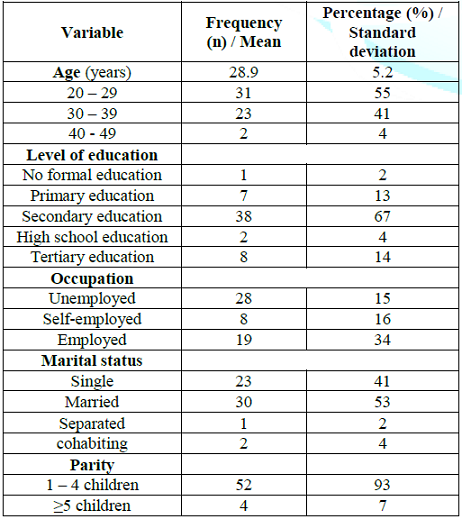
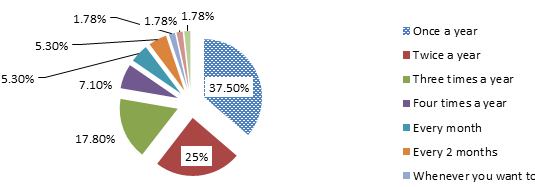
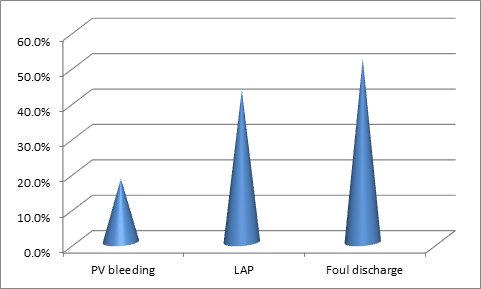
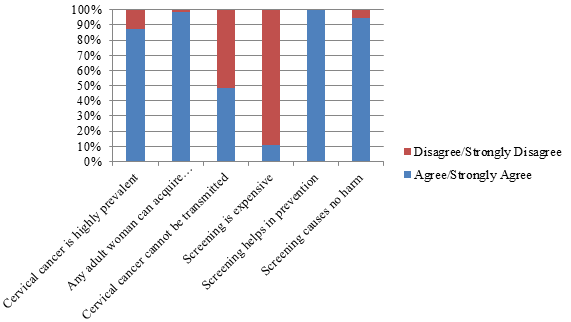

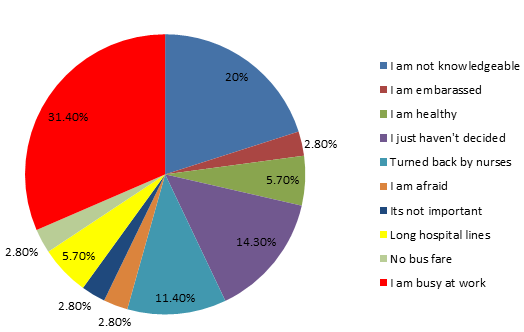
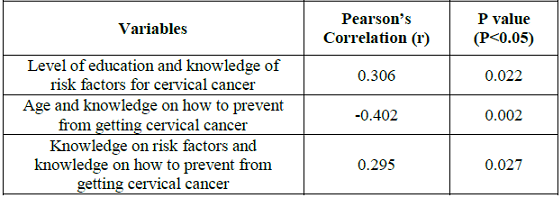
Discussion
References
*Corresponding author
Citation
Keywords